Alaska Cruise Travel Guide
Jim from WINEtineraries is back again with another write up. This time he is here to share his Alaska cruise travel guide. An Alaska cruise is a bucket list item for many people. Most who make this trip will let their cruise line arrange their excursions. Even so, they may find some helpful ideas in this guide. For those, however, who enjoy independent travel and prefer to avoid paying inflated prices to be herded onto motorcoaches, this guide may be a gold mine of tips and high value experiences in some iconic ports of call.
Alaska Cruise Travel Guide: General tips
Here are a few general tips to prepare for your cruise on the days leading up to your departure.
Tip #1: “Got a ticket for my destination….”
Many Alaska cruises depart/return to either Seattle, WA or Vancouver, British Columbia, Canada. All will include a Canadian port of call, usually Victoria or Vancouver (on the return). One benefit of cruising right now is that the U.S. requirement (at the time of writing) for a negative COVID test the day before returning to the States does not apply to entry by land or aboard a maritime vessel.
Cruisers prone to seasickness may want to consider that cruises departing from Vancouver sail in the calmer waters between the mainland of British Columbia and Vancouver Island on the first leg of their journey.
Tip #2: “Don’t worry; be happy”
Sure, you can (and, some would argue, you probably should) take out trip insurance but…you can (and, I would argue, absolutely should) plan to arrive in you embarkation port city the day before your cruise.
I learned this lesson the hard way when an air traffic ground stop at Newark caused us to miss the first 2 days of our 25th anniversary Mediterranean cruise. Alaska cruises (at least from Seattle) tend to depart late afternoon.
When you consider flight connections, waiting at baggage claim for your luggage (see the following tip), waiting for your transfer from the airport to your ship, factoring in traffic on the almost 20-mile ride, and then the inevitable, God-awful lines at the cruise terminal, you can see how stressful a same-day arrival can become.
In fact, our flight was scheduled to arrive SEA @ 12:10pm but was delayed because of tailwinds and flight weight. In the end, we didn’t arrive until about 1:15pm which would have made it dicey to make our same-day cruise embarkation scheduled to depart @ 3:00pm.
Tip #3: “Carry on, my wayward son…”
Carry on all your luggage; we haven’t checked any luggage (except wine shippers) for years. Even though heavy packers may consider this impossible; it can be done. Doing so means you can’t be separated from your bags, and it saves at least 30 minutes at baggage claim (which can be an absolute lifesaver if you’ve ignored Tip #2). Click on the links in this sentence for ideas about what to pack and how to pack for an Alaska cruise.
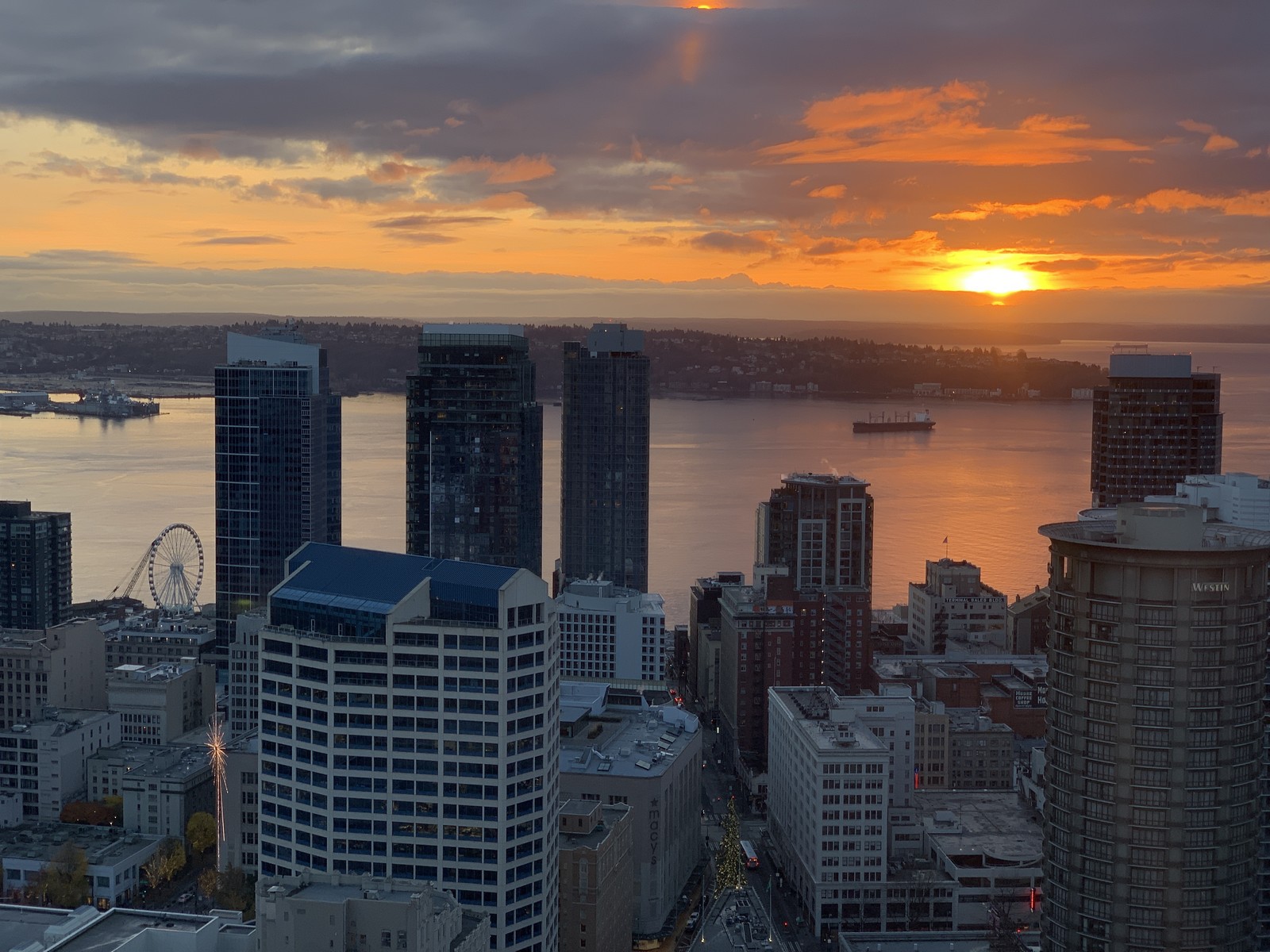
Seattle-Tacoma International Airport (aka SeaTac or SEA) Information
Since you will likely be flying into Seattle and hopefully staying over night (see tips above) here is some information on the airport and local area. You can take a little trip before your trip with your free night.
Lounges/Dining
SEA is home to one of nicest domestic airline lounges – the Alaska Airlines lounge in the North Satellite concourse (which is used exclusively for Alaska Airlines’ flights).
You can get access the following ways:
- Admirals Club or Alaska Airlines Lounge membership
- Alaska Airlines’ first-class ticket
- Pay-in ($25 for Bank of America Alaska Airlines Visa Signature card or $50 without)
SEA also has 2 Priority Pass restaurants; Bambuza in the North (N) Satellite concourse near Gate N19 or Trail Head BBQ Bar near Gate C1. Both are open from 5:00am – 10:30pm, so it’s easy to get a meal no matter what time your flight arrives/departs.
Link Light Rail
If you’ve booked an Alaska cruise departing the next day, you can take the super-convenient Link light rail from the airport to the stop of your choice in downtown Seattle to enjoy a little sightseeing and a nice, relaxing dinner the day before your cruise.
One-way fares are just $2.25/person ($1.00 for seniors). The airport station for The Link is located on the 4th floor of the north end of the airport parking garage. To get to the station, start at baggage claim carousels #15 and #16, cross the airport roadway using Skybridge #6, make your way to the 4th floor, and follow the well-marked route.
Note: It’s not a short walk and if you’re toting luggage (especially if you haven’t heeded the advice to pack light above), it can feel even longer. If you’re lucky (as we were), you may be offered a ride by one of the skycaps that patrol the route.
The ticket kiosks at the station are easy to use, and the trains run about every 10 minutes. There are 12 stops between the airport and the Westlake station (where you can transfer to Seattle’s iconic monorail); the entire trip takes about 40 minutes.
Spending A Night In Seattle Before Shipping Out
If you get into town the night before then here are some tips on where to stay and some dining options.
Seattle Lodging
Whether you are brand-loyal or have points to burn, every hotel chain has one or more properties close by one of the downtown Link stations.
I had an annual free night certificate from Hyatt, so we chose the Motif Seattle near the corner of Pike Street and 5th Avenue. It is just a short walk from both the Westlake Link station and Pike’s Place Market, one of Seattle’s top tourist attractions.
Tip: If you’re not familiar with Seattle’s neighborhoods, you may save time by launching the website for Hotels.com and entering any of the Link stops (e.g., “Westlake Station” or “Pioneer Square”) along with your travel dates to see a comprehensive list of lodging options.
You can then narrow the results by adding a filter for the hotel chain of your choice and their locations relative to the Link station you entered as your destination by using the “View map” feature. Finally, search for award availability on the website for your preferred hotel chain.
Seattle Dining
As with hotels, there is no shortage of dining options in Seattle’s downtown core:
Cutter’s Crahbouse
If you’re not familiar with Landry’s family of restaurants, it might be worth checking whether you have one of their brands near your home. It costs $25 to join Landry’s Select Club, but you get that back immediately in the form of a “Welcome!” dining credit. You also get a $25 birthday dining credit each year.
Landry’s also emails an offer for 40% in bonus dining awards for every $50 gift card purchased a couple times each year. Since I had $20 in bonus dining rewards that were expiring, I chose Cutter’s Crabhouse, a well-reviewed Landry’s restaurant on Elliott Bay near Pike Place Market.
Since Cutter’s is also on the OpenTable reservation system, I earned 100 dining points which I’ll save to cash in for a dining certificate at some point in the future. My wife ordered blackened mahi-mahi paired with a Washington state dry Riesling, I ordered a seafood trio paired with an Argentinian malbec and we shared a phenomenal crab and artichoke dip appetizer.
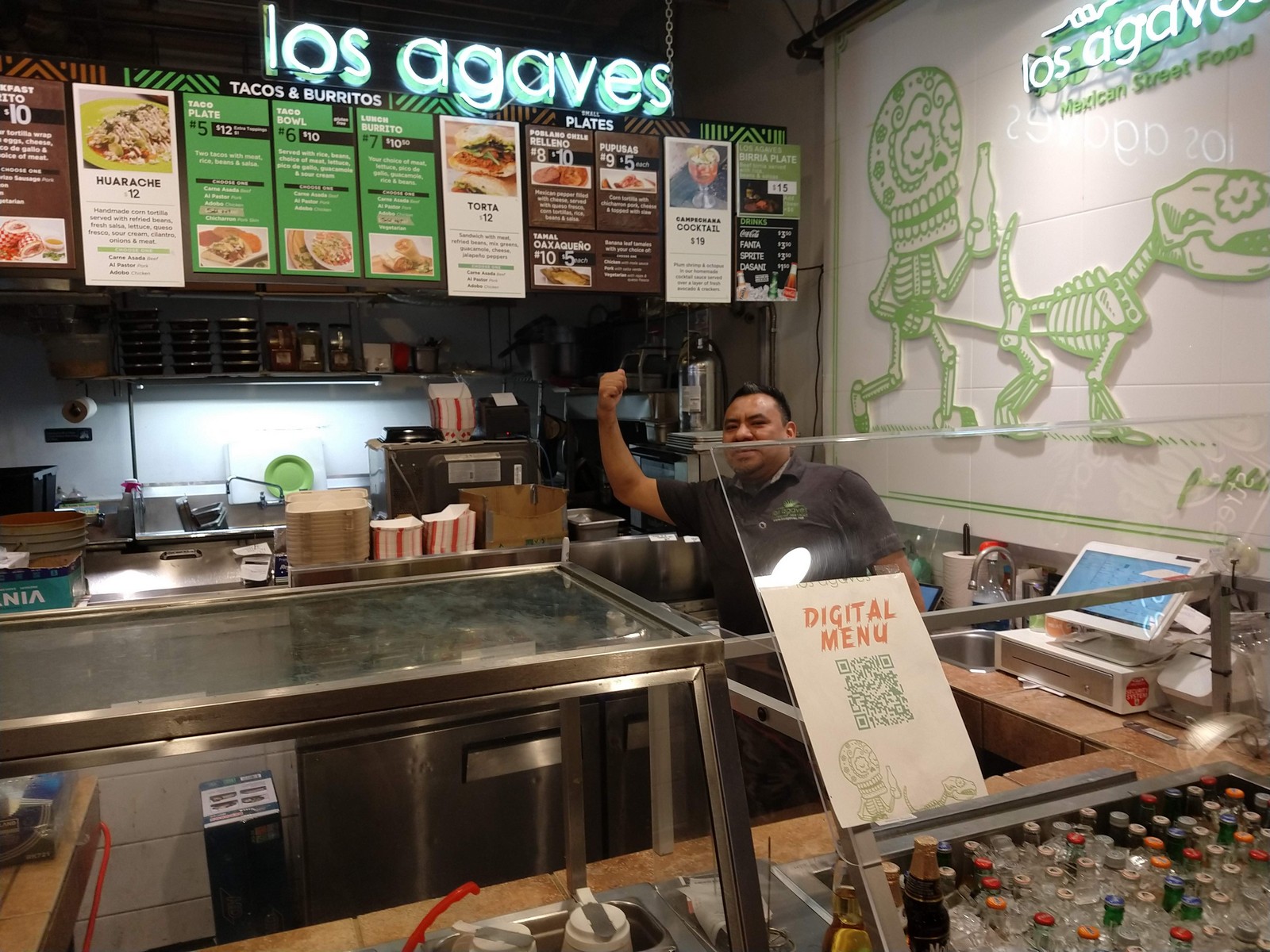
Los Agaves
This little family-run stand can be a bit tricky to find but it’s worth the effort! It’s in the Pike Place Market building, across the street from Rachel, the life-size bronze piggy bank (be sure to rub her nose and make a donation to a worthy cause for good luck!), tucked away behind two fish markets and the Three Girls Bakery. We shared a very tasty breakfast burrito ($10). Los Agaves is on Dosh, which gave me 5% cash back as well as on the AAdvantage Dining Rewards network which earns Loyalty Points to support my quest to requalify for Executive Platinum status with American Airlines for 2023-24.
Alaska Cruise Travel Guide: Ports of Call
Here are the various ports of call we visited and what to do in each.
Juneau
With 250 miles of hiking trails and only 190 miles of city- and state-maintained roadways, Juneau is the most remote state capitol in the U.S. But this doesn’t mean there’s not plenty to do here.
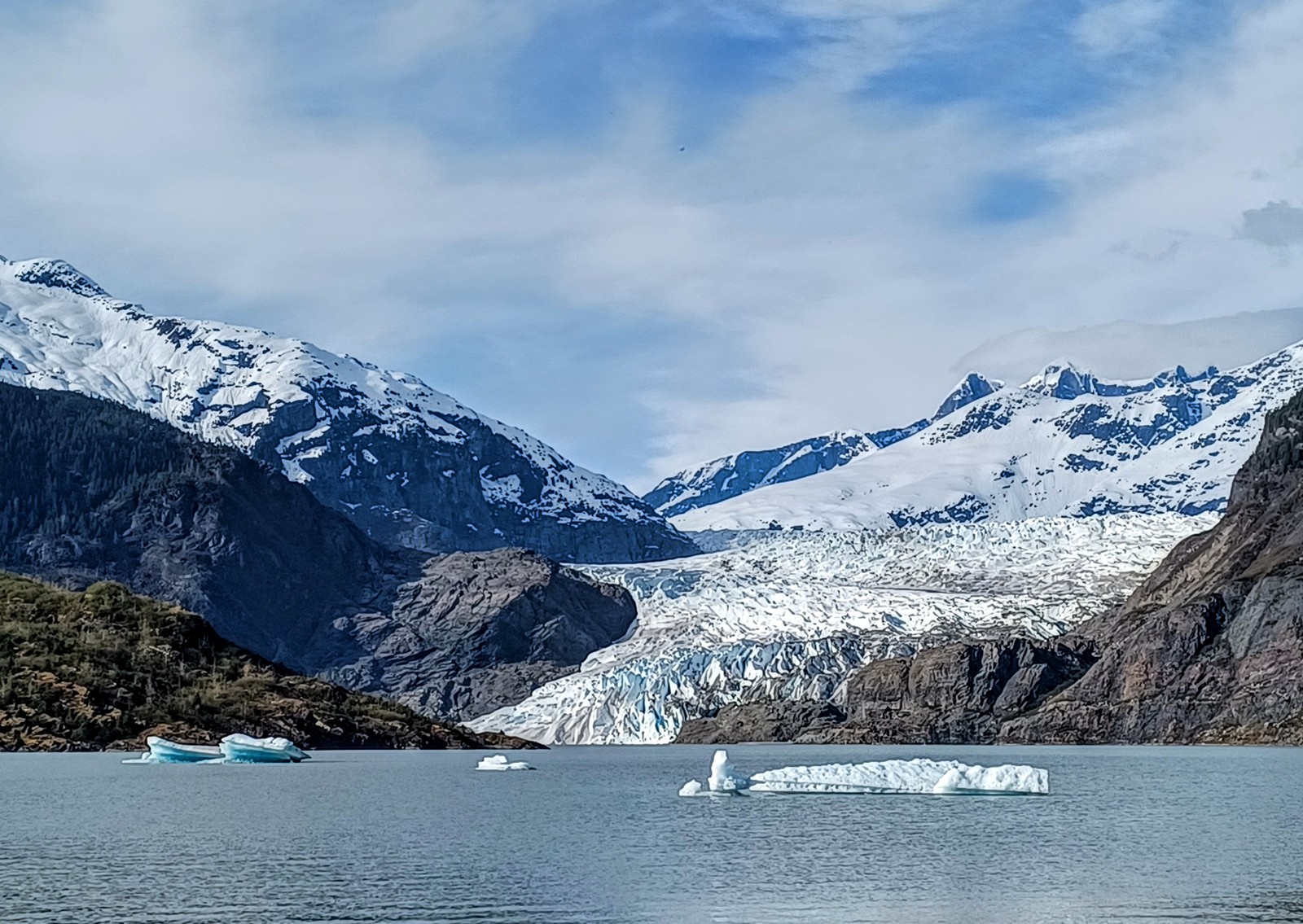
Mendenhall Glacier
The Mendenhall Glacier is accessible via public bus but it’s a 1.5 walk from the closest stop on line #3 or #4. Juneau Tours operates the Glacier Shuttle ($45 for 13+, $40 for ages 3-12) departs from in front of the Mt. Roberts Tramway (right where your ship docks) at least twice/hour and drops you off at the Mendenhall Glacier Visitor Center, the admission ($5) to which is included in your ticket.
The closest you can get to a view of the retreating glacier is at the Visitor Center. The only path to the edge of the glacier itself is via the moderately challenging West Glacier Trail which is reached only by taxi or rental car. If your aspiration is to walk on the glacier, you’re looking at a strenuous, professional guide-led, full day trip ($200-$400/pp + tax).
“Juneau Voices”
is a free, self-guided audio tour of downtown Juneau featuring first person storytelling from Juneau natives. The location of stops 2-11 are available online (I will gladly email a map free to M2M readers on request). The website says only “Juneau Voices #1 is located at several welcoming signs along the seawalk in downtown Juneau.” So, I asked at the Visitor Information building on the dock as you exit your ship where I could find stop #1, but they didn’t know. Eventually, I found a location with a #1 QR code; however, it played the script for stop #2. Evidently this project is still a work in progress.
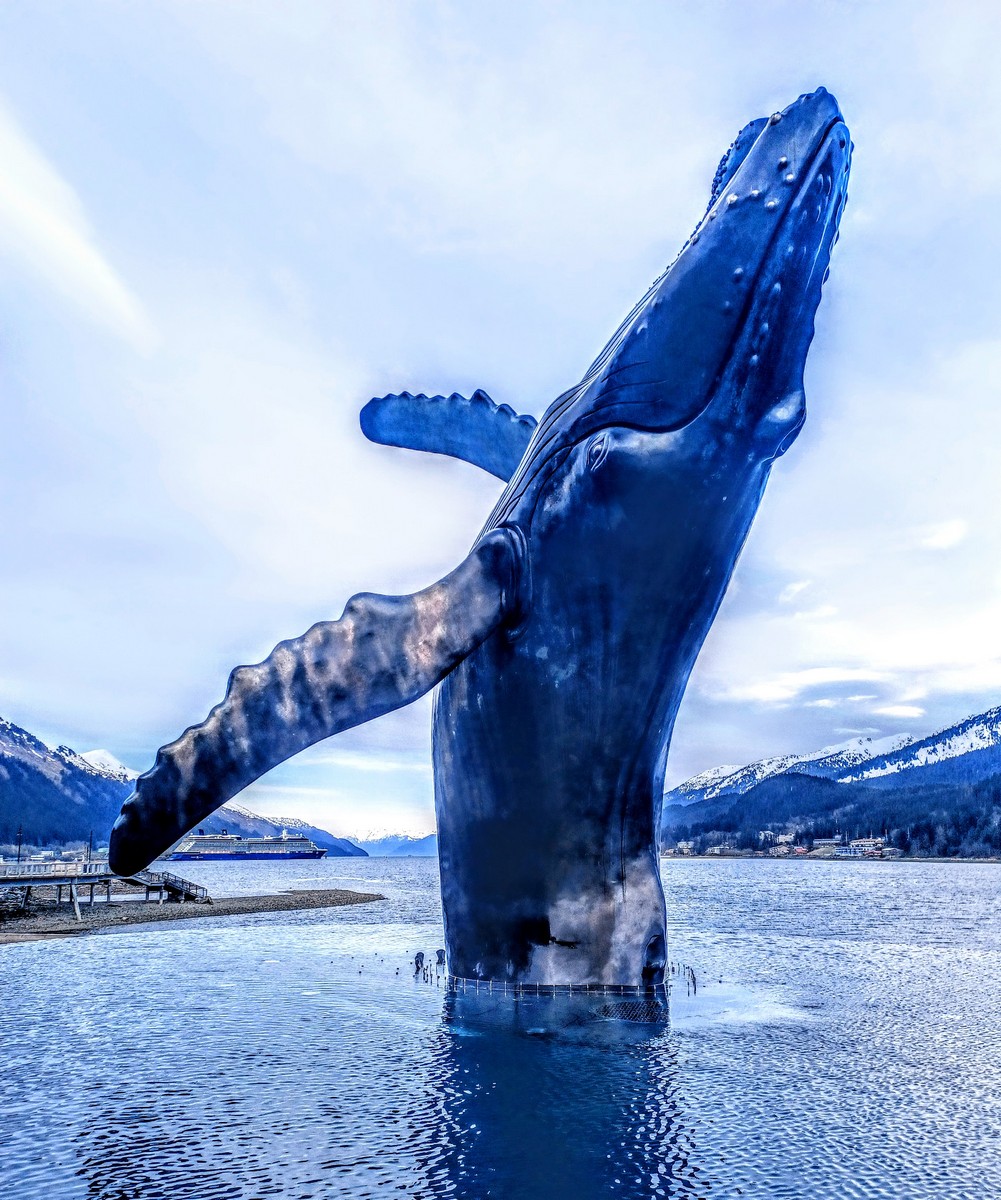
Takhu
is the name given to a life-size bronze sculpture of a breaching humpback whale which is about a 20-minute walk from where the cruise ships dock. It is the happy marriage of two inspirations: a former Juneau mayor’s admiration of the monumental (6.5 tons, 25’ tall) sculpture of a blue whale at the entrance to Japan’s National Museum of Nature and Science in Tokyo and the sculptor’s observation of a humpback bubble net feeding off the west coast of Admiralty Island.
Installation was finally completed in 2018 with the addition of lighting and fountain jets to simulate the effect of water streaming off a breaching whale which, sadly, were not operating on our visit.
Sitka
Here’s a counter-intuitive trivia question for you: “What is the largest city (in land area) in the U.S.?” With a population of 8,310 spread over 2,870.3 square miles (more than twice the size of the state of Rhode Island!), the answer is “Sitka.” In fact, the 4 largest cities in the U.S. by land area are all in Alaska! And Sitka offers these truly memorable experiences:
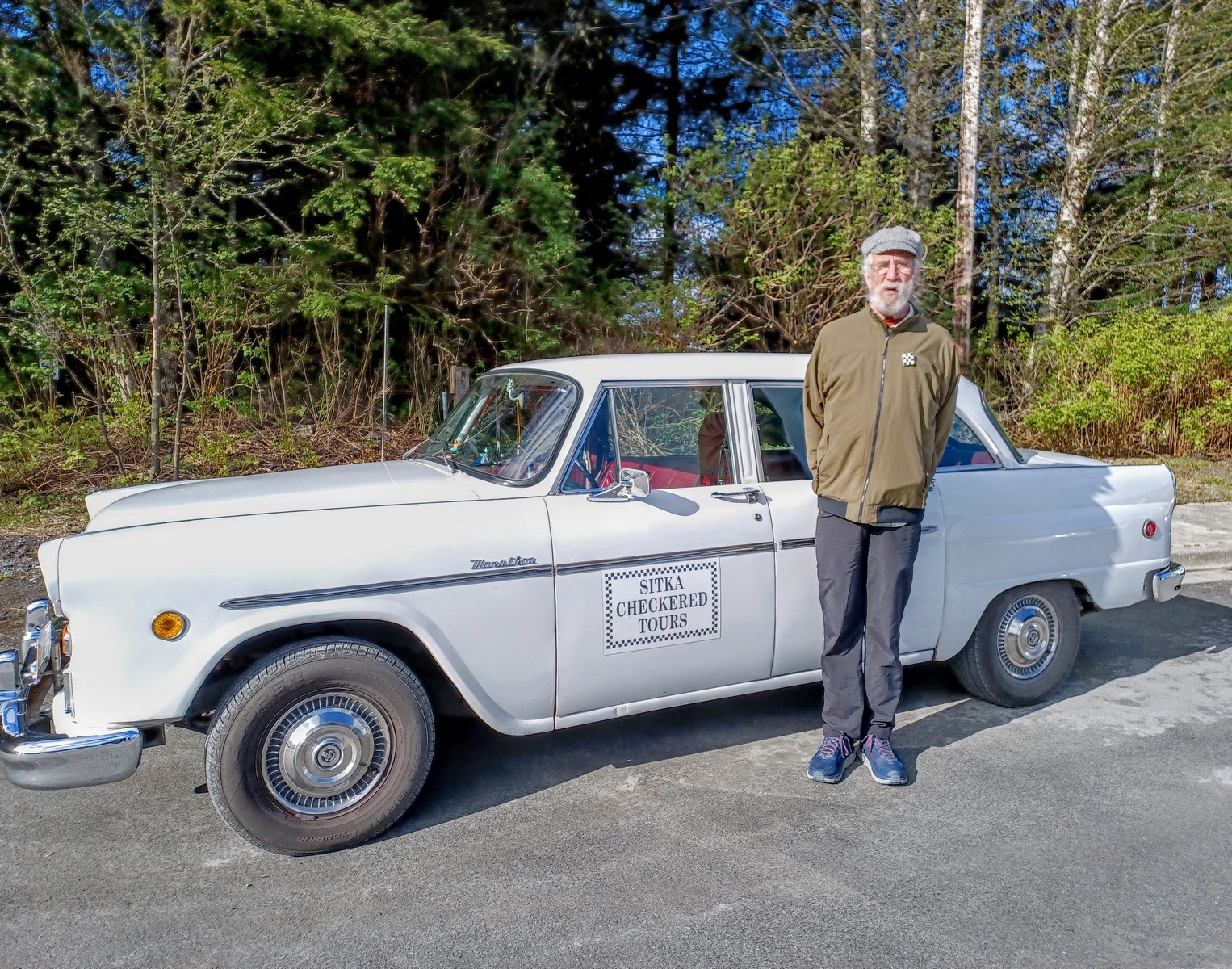
Sitka Checkered Tour and Historic Sheldon Jackson Campus Tour:
“Who you gonna call” if you want the definitive introduction to this fascinating location? Not Ghostbusters but Jeff Bud (and his car is almost as cool)!
Sitka resident for 37 years, cruise line guest lecturer, and walking encyclopedia of local history, flora, and fauna, Jeff offers private tours using his pristine, classic 1973 Checker Marathon car (pictured above). Jeff’s mission in life is to convince everyone who enters his orbit that his adopted hometown is, indeed, more than worthy of its nickname, “The Paris of Alaska.”
To fully appreciate the moniker, one must understand Sitka’s heritage and vision, upon which Jeff will happily expound. While San Francisco was still a sleepy port town with a population of less than 500, Sitka could already boast of having the first piano, first opera house, and first theater on the west coast. The Reverend Sheldon Jackson, a Presbyterian missionary in the last quarter of the 19th century, who subscribed to the ethnocentric concept of acculturation through education, also recognized the need to preserve important aspects of indigenous culture.
Today, Sitka is home to the Sitka Music Festival (a month-long series of classical chamber music concerts each June), the Sitka International Cello Seminar each July, the Sitka Fine Arts Camp, a biannual performance of The Nutcracker (with an Alaskan twist!) by the Sitka Studio of Dance, etc. And talk about ambition – Sitka has adopted a 100-year plan to be named a UNESCO World Heritage Site!
Jeff offers two tours. The Historic Sheldon Jackson Campus Tour (90 minutes, 30 of which are for you to explore the collection of native Alaskan artifacts in the Sheldon Jackson) focuses on the 20 buildings on this former site of Alaska’s oldest institution of higher learning. Jeff’s Sitka Checkered Tour can be focused on one’s interests – from Sitka’s history to the culture of its indigenous peoples to the rescue of its wildlife.
Sitka Sound Science Center (SSSC):
The nondescript home to this hands-on aquarium and oldest operating salmon hatchery is directly across the street from and part of the Sheldon Jackson Campus.
SSSC’s 90-minute “Behind the Scenes” tour ($25/adult, $20 for12 and under) includes all day admission to the Aquarium (otherwise, $8/adult and $6 for 12 and under) and takes one through the research center and hatchery. The hatchery plays an important role in keeping the wild salmon population stable by rearing and releasing 3 million Pink salmon, 3 million Chum salmon, and 250,000 Coho salmon per year.
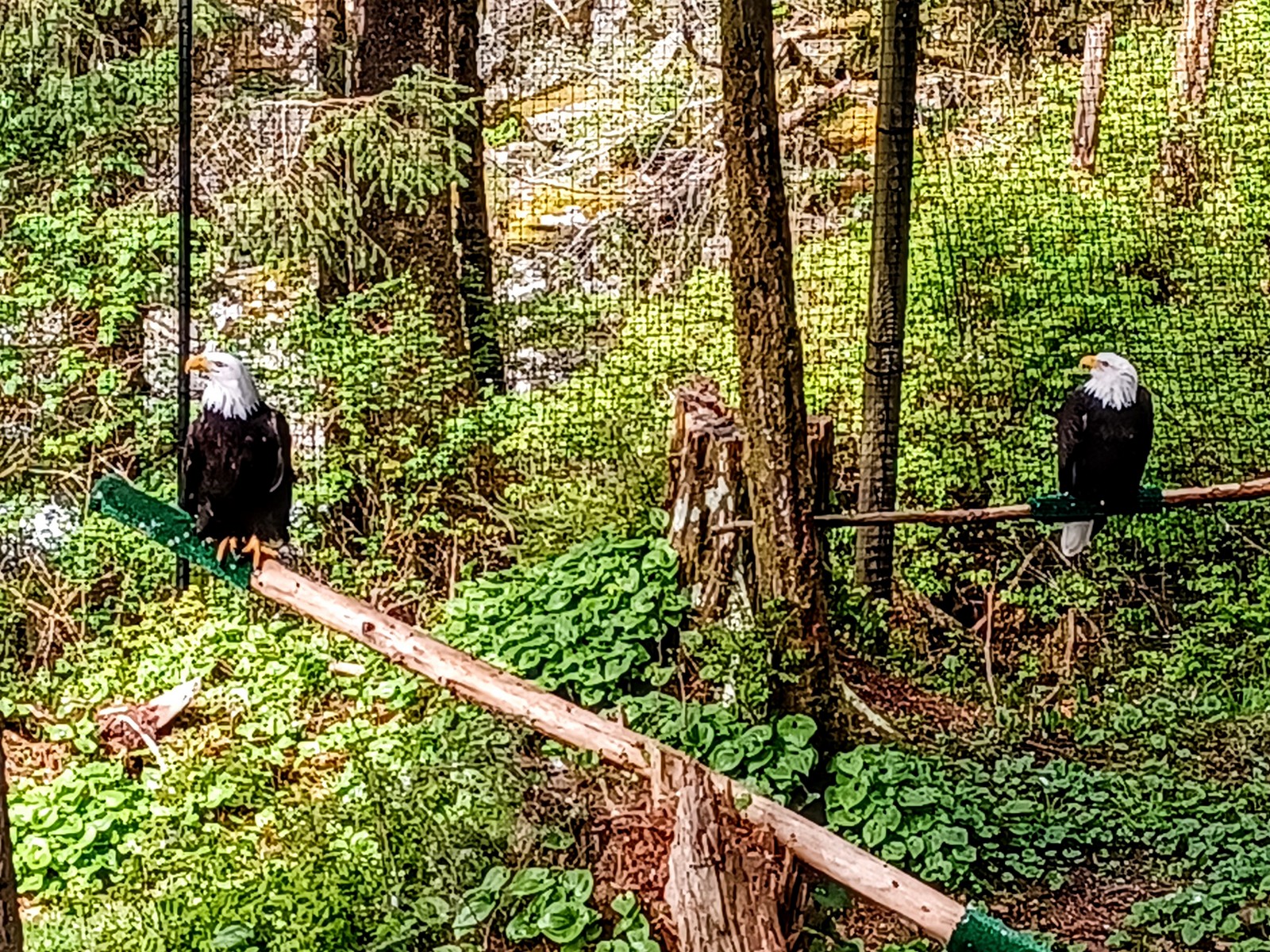
Alaska Raptor Center
It’s about a 24-minute walk (1.1miles) from Harrigan Centennial Hall (where the cruise ship shuttle buses drop you off) to this nonprofit home and hospital for injured raptors.
The oldest permanent resident, a bald eagle named Volta that was electrocuted, suffered a concussion, injured an eye and – most important – broke a wing bone necessary for flight in a 1992 collision with power lines. Even though Volta can’t fly, he has visited almost every state in the U.S. as an ambassador for the Center and the important work of wildlife conservation.
The bald eagle Flight Training Center (included in the price of admission) is a marvel! Here, raptors which can be rehabilitated regain their flight skills for release into the wild. The slatted roof is open to the elements and, during our visit, we actually saw wild eagles perch and interact with their convalescing peers inside! Admission is $15/adult, $6 for ages 6-12.
Sitka National Historic Park
(free entry) is just a 13-minute walk from Harrigan Centennial Hall and is easily paired with a visit to the Alaska Raptor Center. The park was created in 1910 to commemorate the 1804 battle between the native Tlingit and the Russians who had established a post for fur trading in Ketchikan. Totem Trail leaves from the Visitor Center, passing replicas of 20 totem poles on a relaxing walk around this peninsula. If you’re lucky, you may even be able to watch Tlingit Master Carver Tommy Joseph working on a pole.
Alaska Cruise Travel Guide: Ketchikan
is home to the world’s largest collection of standing totem poles as well as the infamous “Bridge to Nowhere” (which was never built). Its name is derived from the phrase Kich xáan, which, in the indigenous Tlingit language, means “thundering wings of an eagle,” referring to the sound made by the wings of eagles who frequent the area to catch and eat salmon. There’s no better place to appreciate the appropriateness of the town’s name than at the Ketchikan Museums which include:

Tongass Historical Museum
at 629 Dock Street, is just a 10 minute walk from where the cruise ships dock The Museum’s location, alongside and overlooking Ketchikan Creek, where salmon begin their journey upstream to spawn and die, is meant to convey that we are part of a circle of life much larger than any of us.
There’s a subtle genius to the way colored panels are used to organize the museum’s exhibits. Salmon (of course!)-colored interpretive signs describe each exhibit’s central theme. Panels with white text on a green background present photos, examples, and explanations of each theme. Finally, lighter green-gray panels present supportive quotations to ground each exhibit in the experience of individuals (often local). It’s like a color-coded outline to each exhibit.
Admission is $6/18+, $5/senior, 17 and below are free.
The Salmon Walk
From the museum, we walked along a route that will be called the “Salmon Walk,” which follows the path salmon take from where Ketchikan Creek empties into the Tongass Narrows, up a salmon ladder to the spawning grounds. Interpretive signs (shaped like salmon, of course!) will explain the significance of each step in the final journey of the salmon and the completion of their amazing circle of life.
The Salmon Walk ends at the Totem Heritage Center, built in the shape of a traditional native clan house. Here we learned that these poles can’t be read like a book; they were carved to honor important people or recall significant events in the life of the families or clan which erected them. Totem poles were never intended to be permanent museum displays; they were raised, allowed to weather and decay, finally returning to earth…again, completing the circle of life. (See the overarching theme here?) They are preserved here to honor the rich culture that created them.
The Ketchikan Story Project offers a thorough explanation of the Chief Johnson Totem Pole, one of the most photographed in the world. A replica stands less than a football field away from the Tongass Historical Museum at the intersection of Mill and Dock Streets.
Admission structure here is the same as for the Tongass Historical Museum, except that you can purchase a “Museum Pass” which gives you entry to both for $9.
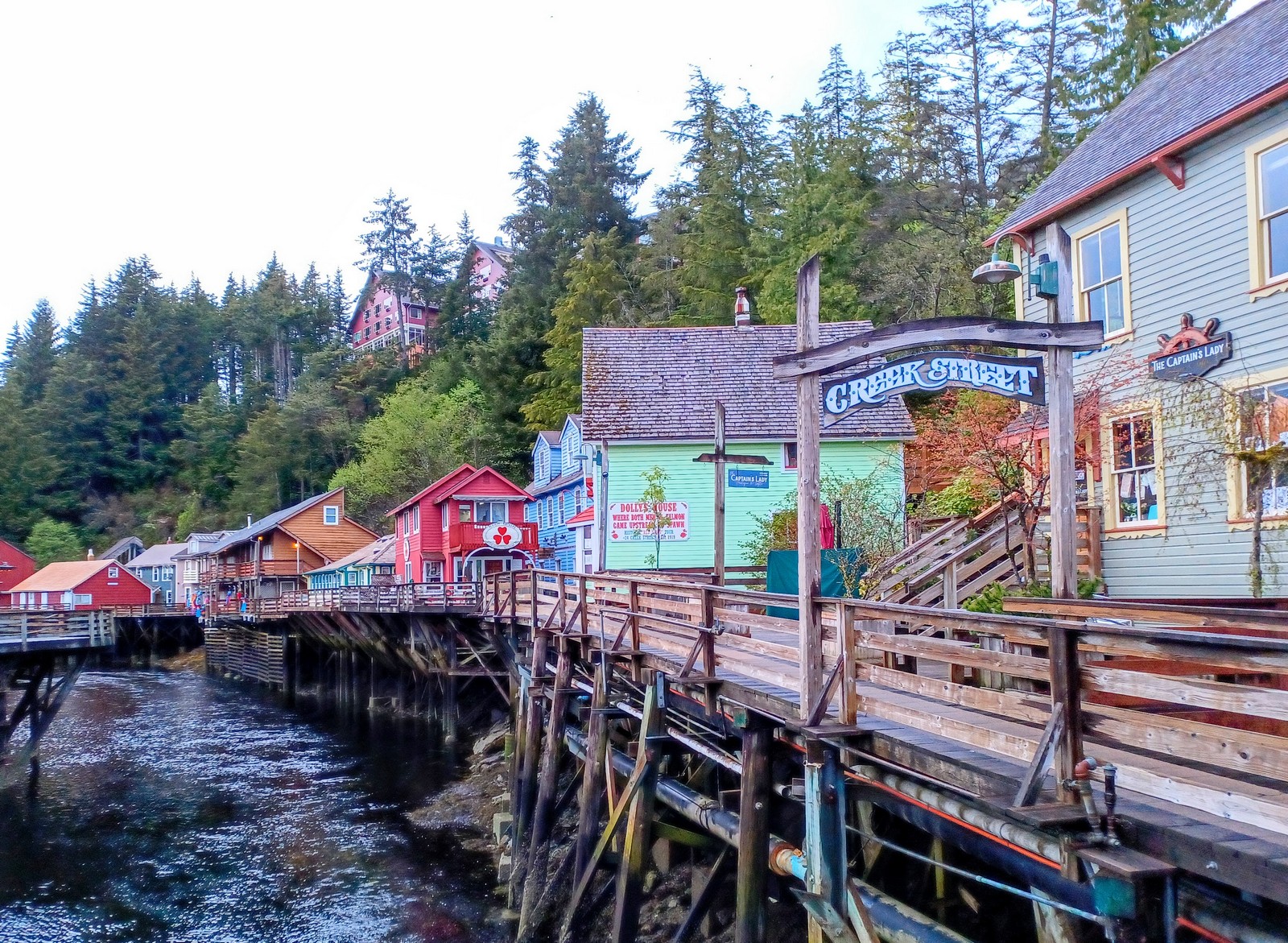
Creek Street Photo Op
If you want the iconic shot of Creek Street, probably the most photographed spot in Ketchikan, be one of the first off your cruise ship and walk straight there.
The tongue-in-cheek sign on Dolly’s House, “Where both men and salmon came upstream to spawn” hearkens back to the Alaskan Gold Rush, when most these buildings were brothels owned by female entrepreneurs. Today, this walkway, elevated over Ketchikan Creek, is home to locally-owned specialty shops and restaurants.
Alaska Cruise Travel Guide: Final Thoughts
That should about do it. Hopefully you enjoyed Jim’s Alaska cruise travel guide and got some valuable tips along the way. His trip looks absolutely amazing and I may need to revisit Alaska after reading this. The Takhu sculpture and Creek Street look like two things I would really love to see in person.
Thanks again to Jim from WINEtineraries for putting this Alaska cruise travel guide together for us. If you enjoyed this guide be sure to check out his others he has written for us:
- Everything To Eat, See & Do In Bangkok, Thailand: Our Complete Travel Guide
- Road To Hana: How To Survive The Most Scenic White Knuckle Drive Out There
- These Are Some of My Favorite Things to Do on Maui
- Our Amazing Auckland City Guide Just In Time For New Zealand’s Reopening
- Tour Like A Pro! 8 Tips to Demystify Wine Tasting
- How to Spend 72 Magical Hours in Oslo, Norway
- With Car Rentals Still Sky High, Here Is How To Visit Oahu Without A Rental Car
- The Mileage Run From Hell in Pursuit of American Airlines Status
- GEMS of Napa and Sonoma – The Best Wine Tasting Experiences


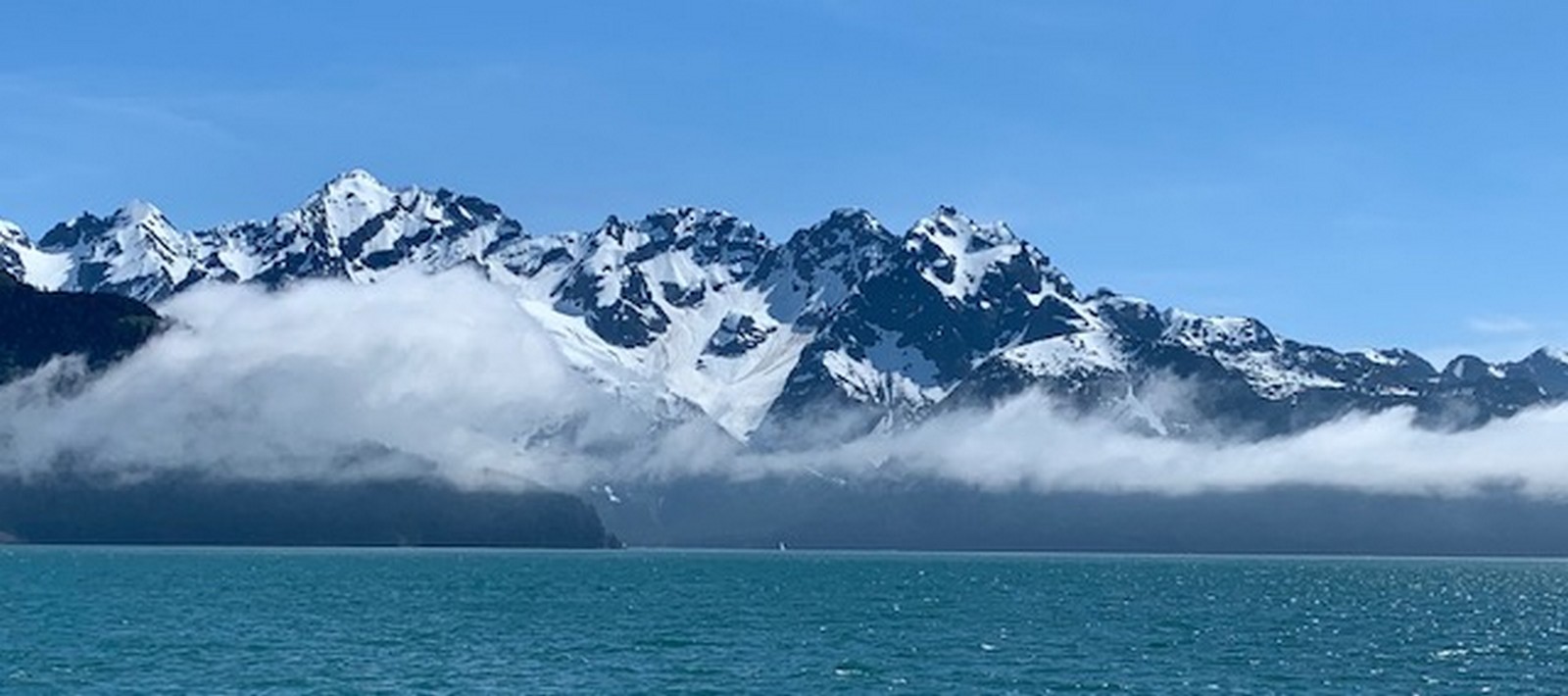
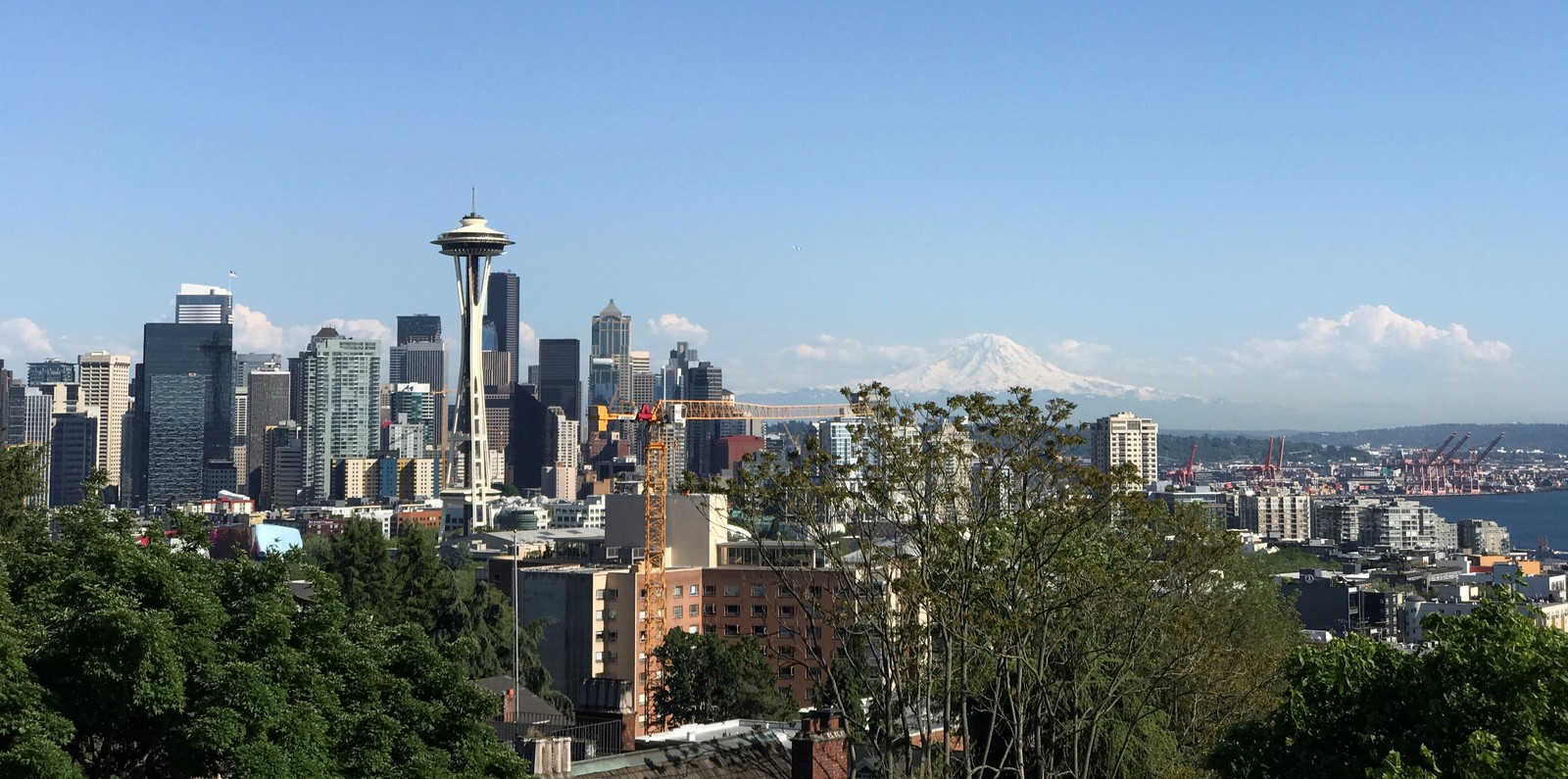

Thanks for the article! I’m headed there in just a few days, and I would love to take you up on your offer to email the free map to Juneau Voices. Can you access my email from this post? (I’d prefer not to post it publicly.) Thanks!
I forwarded your email on to Jim so hopefully he gets that to you in the next few days.
Thanks!
Read the “guide” and decided against taking such cruise. The main reasons, being in Alaska twice on land by car and RV – definitely comes with way more wildlife experiences and choices of what to see. Even a day nature cruise from Seward offered more exciting things, including glacer viewing, island hopping, whale and other marine animals watching, plus local salmon dinner. And moose watching is unparalleled in mainland Alaska, compared like on African safari.
I’d rather go see live animals than man-made statue.
Alaska is a huge place and absolutely one can get closer to much wildlife in Alaska’s interior. However, it’s impossible to drive (unless you load your vehicle on a ferry) to some of the places on most cruise itineraries (including Alaska’s capital!). For many who may want an “easy” introduction to the beauty that is Alaska, a cruise may be their preference. To each their own…. And, we saw a number of live humpback whales swimming very near the ship and on a whale watching excursion from one of the ports. Takhu is just kind of impressive — as a sculpture — and has a neat story behind it. Thanks for your comments.